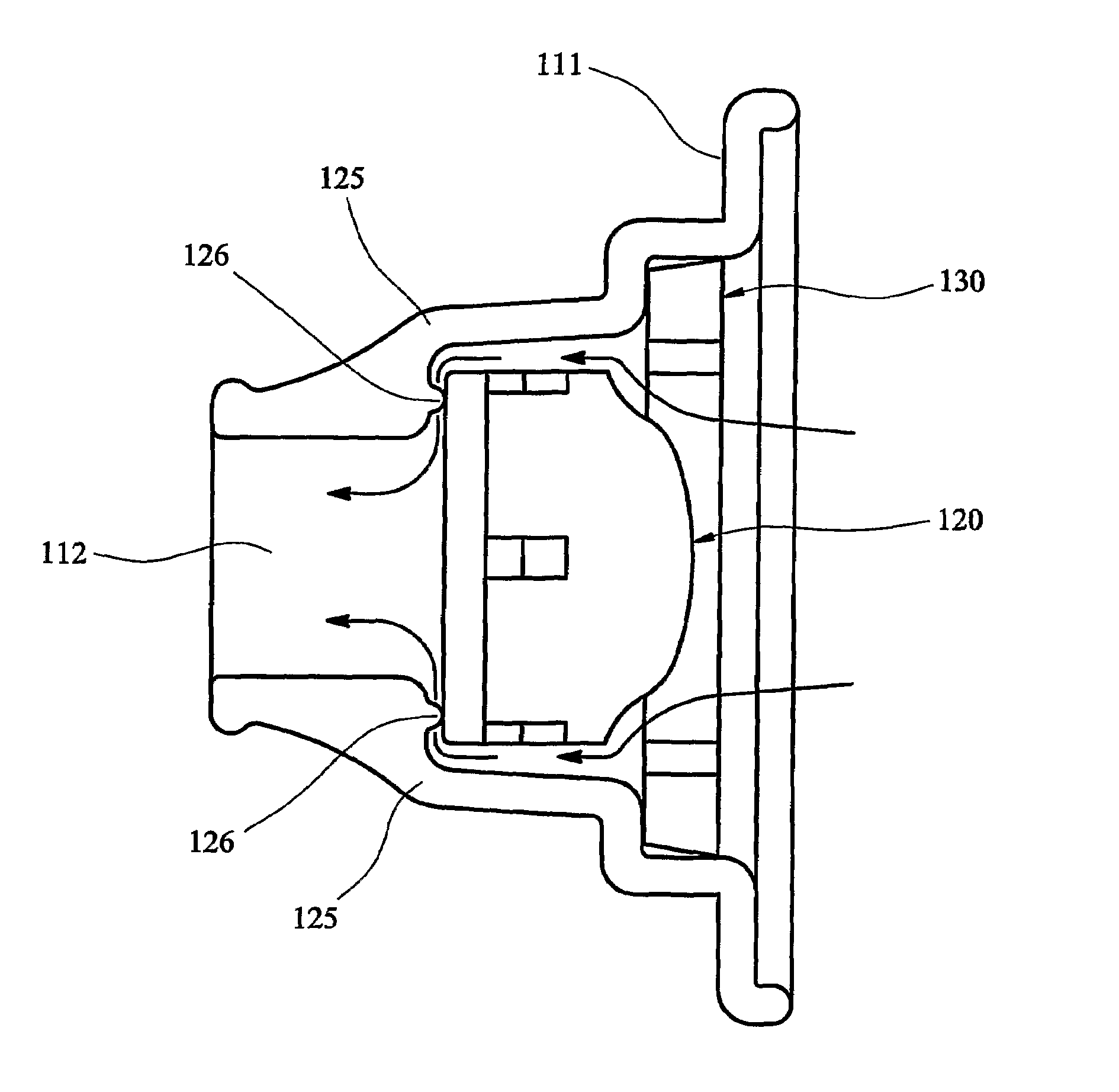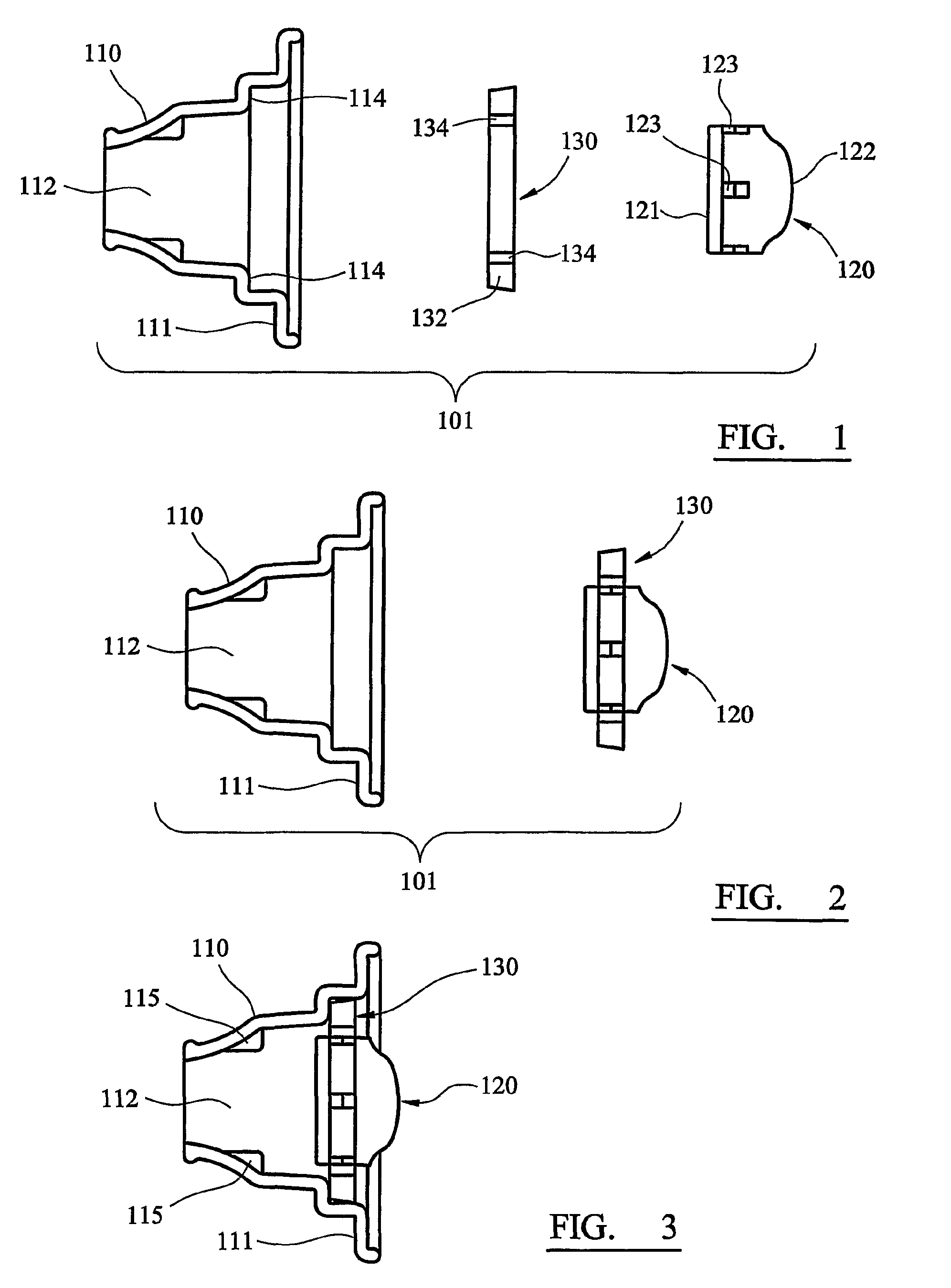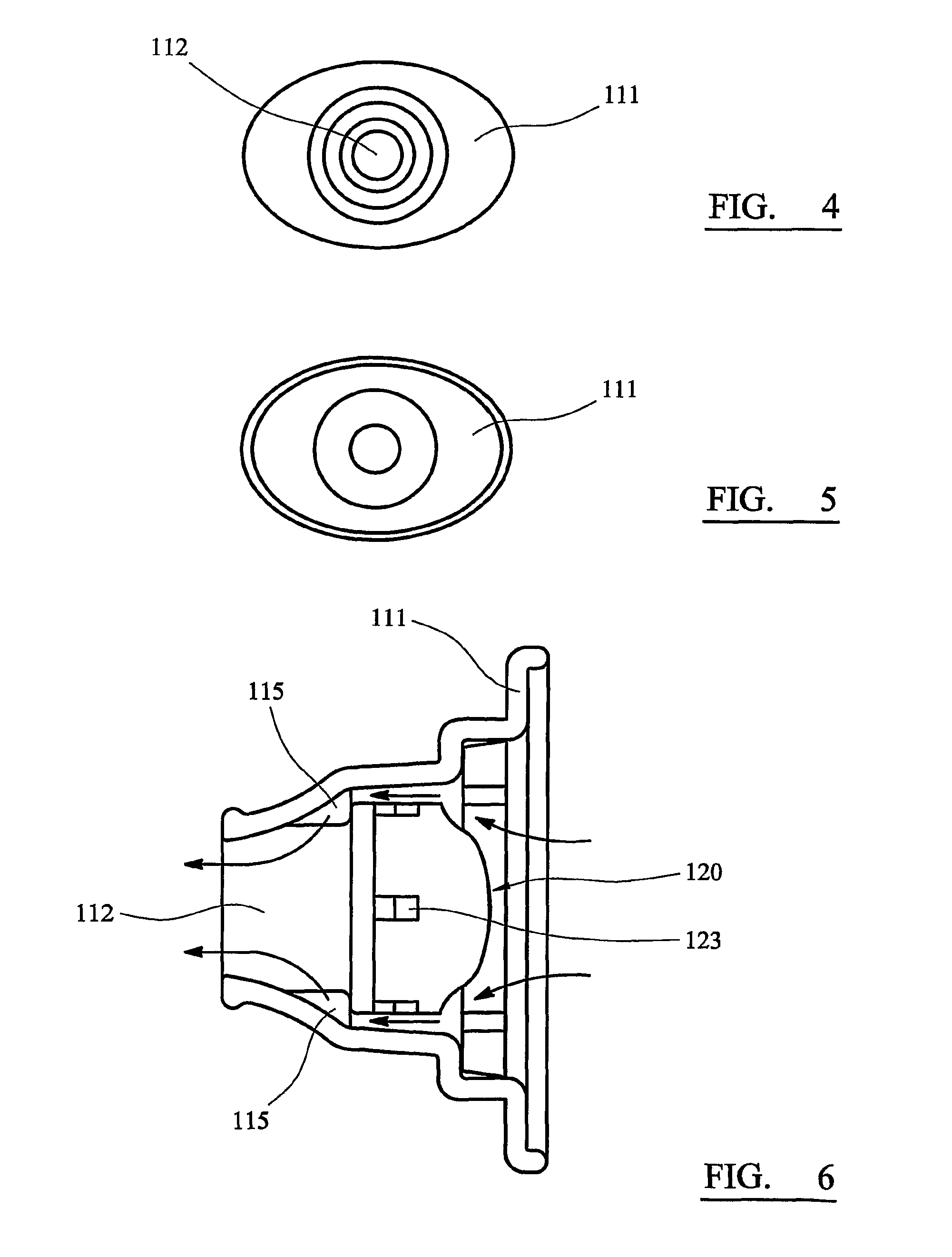Inhaler
a technology of inhaler and inhaler body, which is applied in the field of inhalers, can solve the problems of inhaler disadvantage of relative complexity of manufacture, contaminating the environment, and affecting the safety of inhalers, and achieves the effect of overcompensating or substantially reducing the disadvantages
- Summary
- Abstract
- Description
- Claims
- Application Information
AI Technical Summary
Benefits of technology
Problems solved by technology
Method used
Image
Examples
first embodiment
[0046]Referring first to FIGS. 1 to 6, a disposable, unit dose dry powder inhaler according to the invention is generally designated 101. The inhaler 101 comprises three components: a main body 110, a medicament container 120 and a sealing ring 130.
[0047]The main body 110 is formed as a unitary component by injection moulding in plastics material. The body 110 comprises an ovoid plate 111 from which a hollow, generally conical or funnel-shaped mouthpiece 112 is upstanding. The mouthpiece 112 is circular in cross-section, the left-hand (as viewed in FIGS. 1 to 3) part of the mouthpiece 112 being tapered to a form that can conveniently be inserted between a user's lips.
[0048]The medicament container 120 has the form of a cylindrical drum, the base 121 of which (the left-hand end as viewed in FIG. 1) is flat, and the roof 122 of which (the right-hand end) is domed. A number of apertures 123 are equiangularly spaced around the cylindrical surface of the container 120. In the illustrated...
second embodiment
[0057]The embodiment shown in FIG. 7 is broadly similar to that of FIGS. 1 to 6, and corresponding parts are indicated by the same reference numerals. In the second embodiment, however, the abutments 115 are replaced by a circumferential shoulder 125, from which several small lugs 126 are upstanding. The lugs 126 define a precise separation between the shoulder 125 and the base of the medicament container 120.
[0058]Turning now to FIGS. 8 and 9, a third embodiment of an inhaler according to the invention is generally designated 201, and is intended for the administration of powdered medicament by nasal inhalation. The inhaler 201 is broadly similar in construction to the first embodiment described above, in that it comprises a main body 210, a medicament container 220 that may in fact be identical to that of the first embodiment, and a sealing ring 230 that may also be identical to that of the first embodiment. The principal difference between the third embodiment 201 and the first 1...
fourth embodiment
[0059]an inhaler according to the invention, generally designated 301, and depicted in FIGS. 10 to 13, is constructed in the form of a syringe. In particular, the inhaler 301 comprises an elongate, tubular body 305, one end of which (the right-hand end, as viewed in the Figures) is formed with an integral flange 306, by which the inhaler 301 can be gripped and operated, as described below.
[0060]A plunger 310 is mounted for sliding movement within the tubular body 305. The tip of the plunger 310 is formed with a recess 312, the mouth of which is closed by a closure disc 316 that engages the recess 312 with a snap fit. The recess 312 and the closure disc 316 constitute a medicament container that holds a unit dose of medicament. Dispensing apertures 314 are formed in the medicament container, at the junction of the walls of the recess 312 and the closure disc 316. The external walls of the recess 312 and the closure disc 316 are dimensioned to have a sealing fit with the internal wall...
PUM
 Login to View More
Login to View More Abstract
Description
Claims
Application Information
 Login to View More
Login to View More - R&D
- Intellectual Property
- Life Sciences
- Materials
- Tech Scout
- Unparalleled Data Quality
- Higher Quality Content
- 60% Fewer Hallucinations
Browse by: Latest US Patents, China's latest patents, Technical Efficacy Thesaurus, Application Domain, Technology Topic, Popular Technical Reports.
© 2025 PatSnap. All rights reserved.Legal|Privacy policy|Modern Slavery Act Transparency Statement|Sitemap|About US| Contact US: help@patsnap.com



